What causes career stagnation in IT?
In this article, I provide a brief for career stagnation with top 6 reasons
This is a long article, so grab and coffee and read on!
Career stagnation in the IT industry is a serious silent challenge. In this article, I will try to share the views that I have gathered over the years by working in the IT industry and then changing tracks to the Analytics and startup sector to bring a contrasting summary. I am currently opening up to DM in my LinkedIn account and the interviews from that LinkedIn interview form a crux of my know-how for this article as well. I also see this article as a ready help to help aspiring mid-career professionals to become future tech leaders.
In this article, I will use key economics theory to explain these effects and propose a few solutions to reset a stagnant career.
Law of diminishing return:
Imagine you are in a desert and walking for 10 minutes in the sun and you have run out of water. You keep walking for another 5 minutes and feel very thirsty. I come and give you a 1-liter bottle of water and you take it up and gulp down 1 litre of water. I offer you another 5-litre can of water for you to drink. Will you be able to drink further? No, right?
This is the law of diminishing returns. Beyond a certain point of time adding “more” – be it water or years of experience is no use.
The Law of Diminishing Returns, a fundamental concept in economics, states that as you add more units of a variable input to a fixed amount of another input, holding all other inputs constant, the marginal product of the variable input will eventually start to decline. In simpler terms, it means that at a certain point, the additional input you're putting in will result in proportionally smaller increases in output.
Beyond say 17 years it does not matter if you add another 2 years in ERP or CRM, or you pull another cloud certification. The return is not there for anybody. There is no return for you your organization or the client. Think of ROI always for every action you take after you hit that 17+ years of experience.
I see countless LinkedIn profiles with 20-plus years of experience writing 3x “Add cloud certificate” or another Agile training. All of these do not add up at your experience level much.
I am sorry but that is how it is. A person with 12 years of experience would add just as much value or a 3% percent less but an organization is happy with that.
Rapid technology cycle in BANI:
Digital transformation introduced multiple models to describe the world around us and a couple of them are VUCA and BANI. I would like to explain to you how BANI especially impacts modern mid-career professionals in the digital age.
The BANI model in digital transformation stands for Brittle, Anxious, Nonlinear, and Incomprehensible.
Brittle: This refers to systems or strategies that are fragile and prone to breaking when faced with sudden disruptions or changes.
Example: A company heavily reliant on a single supplier for a critical component. If that supplier faces a disruption due to a cyber-attack, the entire production process could come to a halt.
Anxious: This signifies the psychological toll of constant change and uncertainty, leading to stress and anxiety among individuals and organizations.
Example: Employees in a company that frequently undergoes reorganizations might experience anxiety due to uncertain job roles and responsibilities. This is what is exactly this article all about.
Nonlinear: This emphasizes that cause-and-effect relationships aren't always straightforward or linear, and unexpected outcomes can arise.
Example: ChatGpt an AI chat interface – an unplanned event triggered a significant market swing, which might not follow a predictable pattern.
Incomprehensible: This acknowledges that some challenges or situations are beyond complete understanding, necessitating a collaborative approach.
Example: Climate change and ESG norms a complex and incomprehensible issues for individuals or organizations to address on their own. It requires global collaboration and effort. Understanding blockchain and its full impact is very difficult. To make a fresh start in learning AI is very scary and confusing. Hope you get this aspect of BANI’s incomprehensible.
The BANI model provides a lens to analyze and adapt to the challenges of the modern world, especially in the context of technology and its impact on various aspects of life. Now, BANI has impacted everywhere – we have BANI on the demand side where fresh demand avenues have come up (like AI, Blockchain, Immersive gaming etc.) and this has also induced a new pattern in the supply side where organizations need these modern digital skill like leading in VANI age, digital strategy, un-certain change management plus technology stacks which are mapped with BANI.
A tech leader like a ‘Head of X model’ (Head of data, Head of AI etc.) in 2023 has a different set of problems to solve than a tech leader 10 years back. Now, the challenge is not to leverage economies of scale or cost leverage to solve a business problem. Now, in BANI times a tech leader is seen as someone who will work in 4 dimensions at least – Business-aligned products (not IT-aligned products or tools), Strategy disruptive strategies, Tech stacking (with data, AI, engineering) and community-building. Let me explain them further.
Products: Create new edge (digital/enterprise) products that drive the company with better positioning. This in simple words would mean working towards creating products which compete with no one or very less players. Working as a Head of X in an OTT company would need to work on positioning, the same if you work for a company that is creating a data platform.
This part has gone a stage further and leaders are now looking at the “productization” of the self. As a tech leader, you too are a product who can leverage an immense pull towards your community or even for the products you are offering.
Very successful YouTubers are examples of productization of the self. You productize yourself as a leader not only through the social media process but also by community evangelism, writing a book or taking a side you firmly believe in.
Disruptive strategies: Disruptive strategies are innovative approaches that challenge established norms, reshape industries, and transform business models. These strategies often introduce new technologies, processes, or concepts that significantly alter the way products and services are delivered, experienced, or perceived in a particular market. Disruptive strategies tend to create new opportunities, capture untapped markets, and redefine customer expectations.
They can emerge from advancements in technology, changes in consumer behaviour, or shifts in market dynamics. Ultimately, disruptive strategies lead to fundamental changes within an industry, sometimes rendering existing players obsolete while giving rise to new leaders and paradigms.
One such example is the last leg of quick e-commerce where you order and get your grocery in 10 minutes. The disruptive strategy involved analytics, machine learning supply chain coordination and the creation of a dark store as a concept which enabled such quick 10-minute delivery.

Dark stores are often set up in urban areas or densely populated regions to cater to the growing demand for fast and convenient online shopping. They typically carry a wide range of products like what you might find in a regular supermarket or retail store. However, their primary purpose is to fulfil online orders rather than serve in-store customers.
These dark stores enable retailers to better manage their e-commerce operations, streamline order processing, and reduce delivery times. They are especially popular in the quick commerce industry, where customers expect rapid delivery of groceries, household items, and other essentials. By separating the fulfilment process from traditional brick-and-mortar shopping, dark stores contribute to the efficiency of online retail and enable retailers to adapt to changing consumer preferences.
Bear in mind corporate strategies like M&A etc. are still needed, I am talking about a case where even your corporate strategy is influenced by a disruptive strategy like a strategy chain – You start with a disruptive strategy at the board level and then a disruptive market strategy impacts your Organizational strategy which impacts your business strategy which in turn impacts functional strategy like data strategy or your hiring strategy.
So you can get that, If you are disrupting the market you need a hiring strategy that rewards disproportionately as well (read salary, joining benefits, bonus for achieving the disruptive positioning etc.). So you see the big pot of money now?
The best examples are leaders from huge enterprises, you hardly found them active so much in social media even 2 years back, but now you see them. Soon, you will be awarded for being a product yourself and for showcasing the ability to be a market puller.
The rapid science technology boundary:
The science-technology boundary can be thought of as the intersection between two realms: scientific exploration and practical application. On one side, you have the world of scientific inquiry, where researchers seek to understand the fundamental principles and laws that govern our universe. This is where theories are developed, experiments are conducted, and discoveries are made.
On the other side, you have the world of technology, where these scientific discoveries are harnessed to create tools, products, and systems that improve our lives. This is where innovations are engineered, prototypes are built, and real-world solutions are developed.
The boundary itself represents the bridge between these two domains. It's the point where a scientific breakthrough transforms into a tangible technological advancement. For instance, think of a new scientific theory being developed in a lab – that's on the science side of the boundary. When that theory is applied to create a new medical treatment or a faster computer algorithm – that's on the technology side of the boundary.
This boundary is not fixed; it's dynamic and constantly evolving. Scientific discoveries often inspire new technologies, and technological advancements can lead to new scientific insights. This reciprocal relationship between science and technology drives progress and shapes the development of both fields, ultimately benefiting society.
The science-technology boundary used to be very long in terms of “time” and often spun years before science became a technology. In the digital era in some cases today, the boundary is falling very fast. The impact is a very short skilling cycle and then again, a re-skill cycle. Leaders of today are in constant learning.
Examples of rapid science technology boundary:
The transformer research paper (science) came out in 2017 titled "Attention is All You Need" paper, which introduced the Transformer architecture, was written by Vaswani et al. and was first published in June 2017.

ChatGPT, which is powered by the GPT-3 architecture, was developed by OpenAI and was launched in June 2020. A cycle of 3 years.
A much shorter cycle is with Bitcoin. See below for a 1-year cycle.
The original Bitcoin whitepaper, titled "Bitcoin: A Peer-to-Peer Electronic Cash System," was written by an individual or group using the pseudonym Satoshi Nakamoto. It was published on October 31, 2008.
The Bitcoin Genesis Block, also known as Block 0, was mined by Satoshi Nakamoto on January 3, 2009. This marks the creation of the Bitcoin blockchain and the beginning of the entire cryptocurrency ecosystem. Technically it is a 5-month cycle.
Now compare this with a well-established IT tech like ERP. It looks like 10 years of boundary between science and technology boundary here or perhaps even more if you map with certain ERP products.
One of the earliest references to the concept of integrating various business functions can be traced back to a paper titled "Computer-Integrated Manufacturing Systems" by Oliver Wight, published in 1981. While this paper didn't specifically use the term "ERP," it discussed the idea of integrating manufacturing processes using computer systems. This concept later contributed to the development of ERP systems.
The term "ERP" started gaining prominence in the early 1990s as software solutions began to address the integration of various business processes. So this was a long cycle spanning a decade and maybe another 20 years for the technology (ERP) to become mainstream. But things have changed now.
The next cycle can be 6 months or one month, and bear in mind we are talking of game-changing tech not another IT tool or BPM work.
Net taker effect:
This point is inspired by my understanding of Adam Grant’s work “Give and Take”.
"Give and Take" by Adam Grant explores the concept of reciprocity and how it impacts success and relationships in various contexts, including the workplace. Grant categorizes people into three main groups: givers, takers, and matchers, based on their approach to interactions.

Givers are those who contribute and help others without expecting anything in return. Takers aim to get as much as possible from others, while matches seek a balance between giving and receiving. Through research and real-life examples, Grant demonstrates that givers can achieve both personal and professional success. He emphasizes the importance of creating a culture of giving and helping in organizations and provides strategies for avoiding burnout while maintaining a giving attitude.
At this stage of your career irrespective of your industry try to be a net giver. Give more to the system, give more to the company compared to what you take from the company and community.
If you are a senior professional, this helps as:
Net givers are cherished as leaders due to these top reasons:
- Trust and Respect: Their genuine concern fosters trust and respect, creating a safe and supportive atmosphere.
- Positive Culture: Givers cultivate a positive culture of cooperation and mutual assistance.
- Empowerment: They empower team members, promoting accountability and ownership.
- Strong Relationships: Givers build deep relationships through active listening and sharing credit.
- Long-Term Vision: Their focus on sustainable relationships and growth benefits the team's long-term success.
Examples: You would have seen the latest trend in social media, senior professionals in data engineering, and data science are contributing a lot with their podcasts, blogs and even one-to-one mentoring sessions. I agree for some there is a monetization angle but for most, it is a net giver aspect. This is also a leadership trace, which many times is not planned by many.
Another similar trait of a giver in enterprise is that of a tech leader who apart from a regular job helps Startups incubate within the company, advises Universities, goes for peer reviewers for papers etc. The concept of meetups originated jolly well from this aspect as well and so did community builders.
Be sure to ask, if you are a net giver or a taker. Everyone takes it and flips it over the head. Do it.
Lack of skill evolution:
In the age of BANI with rapid science and technology boundaries, you will always be faced with reskilling again and again. I think the days are gone when you will have a single skillset and then keep on building on top of it by upskilling.

BANI needs you to cross-skill and re-skill. Getting skilled in large language models is a reskill for most unless you are a principal data scientist (it is still an upskill).
The tech leaders should be capable of quickly iterating over new technology and also designing learning models in their organization to establish this. It is a critical mix of learning pedagogy, platforms, and culture. You as a leader will be responsible for all three aspects.
This point is a deal breaker for many as the earlier IT world, had a different approach towards upskilling and reskilling. The large scale of the domain makes it almost impossible to learn any technology in a 30-boot camp. The trick is continuous learning in the literal sense.
There is another aspect of skilling that is different in this phase. The rapid intersection of science and technology makes it imperative that you establish a sync with what is happening in the world of research and actively take an interest in reading some papers from the world of research.
I would suggest aspiring tech leaders introspect and see what learning pattern works best. Professionals who can not bridge this gap and do it quickly will perish. Sad but there is no other way other than reskilling in this era.
Not knowing where to move next:
The landscape is already cluttered and scary for a senior professional looking to reskill. Take any new tech and you see logos of products and platforms thrown at you. Data engineering for example can throw at you an A4 size paper for the latest tools and platforms. The growth of cloud players adds another layer. Which one to choose which to skip?
This is now an art- how to pick up the right tech-to-product mix and start knowing more about it. In this new era of being surrounded by a world of content, taking a mentor in your stride, or having a focused strategy works.
HR’s talking of a T-shaped skillset for mid-career folks. I partly agree with this, I see that as a Pie π than T. You need to have two strong pillars of deep tech skills like the base of the π. The reason I am talking of two core technical skills is due to BANI's impact.
A strong core pillar with dual tech skills helps you against the BANI wave. But bear in mind it is a mitigation and not avoidance stance. You are better off having 2 core skills than one, that is the point I wish to make here.
If you are coming from IT services, then definitely one easy core pillar is cloud computing using Hyperscalers but bear in mind target specialist skills in the cloud, not associate skills. Okay, then the other core skill in the pie π model needs to come from your project background in the past.
If you were from Apps or client-server or J2EE, go for Full stack engineering. If you come from packaged software like ERP, CRM, SR, or MES era go for data. You can also choose AI/ML and get deeply skilled in that layer as well.
Make sure you do some 101 online courses without spending a fortune or time judging what interests you. Please do not chase or show the syndrome of “catching up with Joanne’s”. Pick the second pillar with deliberation and in consultation with your peers and mentors. If you do not have a mentor feel free to DM me over LinkedIn. I can exchange some notes with you.
Ok, the top of the pie model – needs to be strategy, platforms, and products. This is the must-have layer as your base tech stack needs a roof and these 3 are the best roof in BANI. You can now see how it all ties up now.
Example: My first base tech skill in the same pie model is Azure. I have struck to Azure and picked technology as and when it comes to Azure. When Data Lake came in I used Azure and now in Gen AI, I am still using Azure. But this is not always true, sometimes you must learn something new.
Like now I am working on LangChain as there is nothing in any cloud vendors to tie up Generative models or work on generative models with private data.
My second pillar in my Pie model is AI itself, it ties up with my startup background and is a direct path for me from my machine learning days. The roof of the pie is common for me and you viz – Strategy especially disruptive strategy, platforms for me it is customer data platform and products are my startup products.
For you, the products would be the enterprise product you will lead or that comes from your partner. It can also be building product management skills at a minimum.
The key here is to have the mental preparedness to make a start but one that is planned and not whimsical.
You may also consider looking at my free e-book which talks about a checklist across technology to get started. DM me over link for the free e-book.
I hope this article was useful and if you have any questions feel free to comment. Please be a net giver to the community and consider sharing this article
.

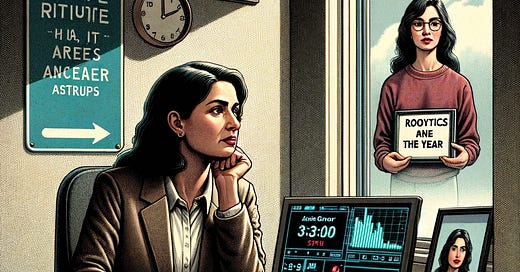



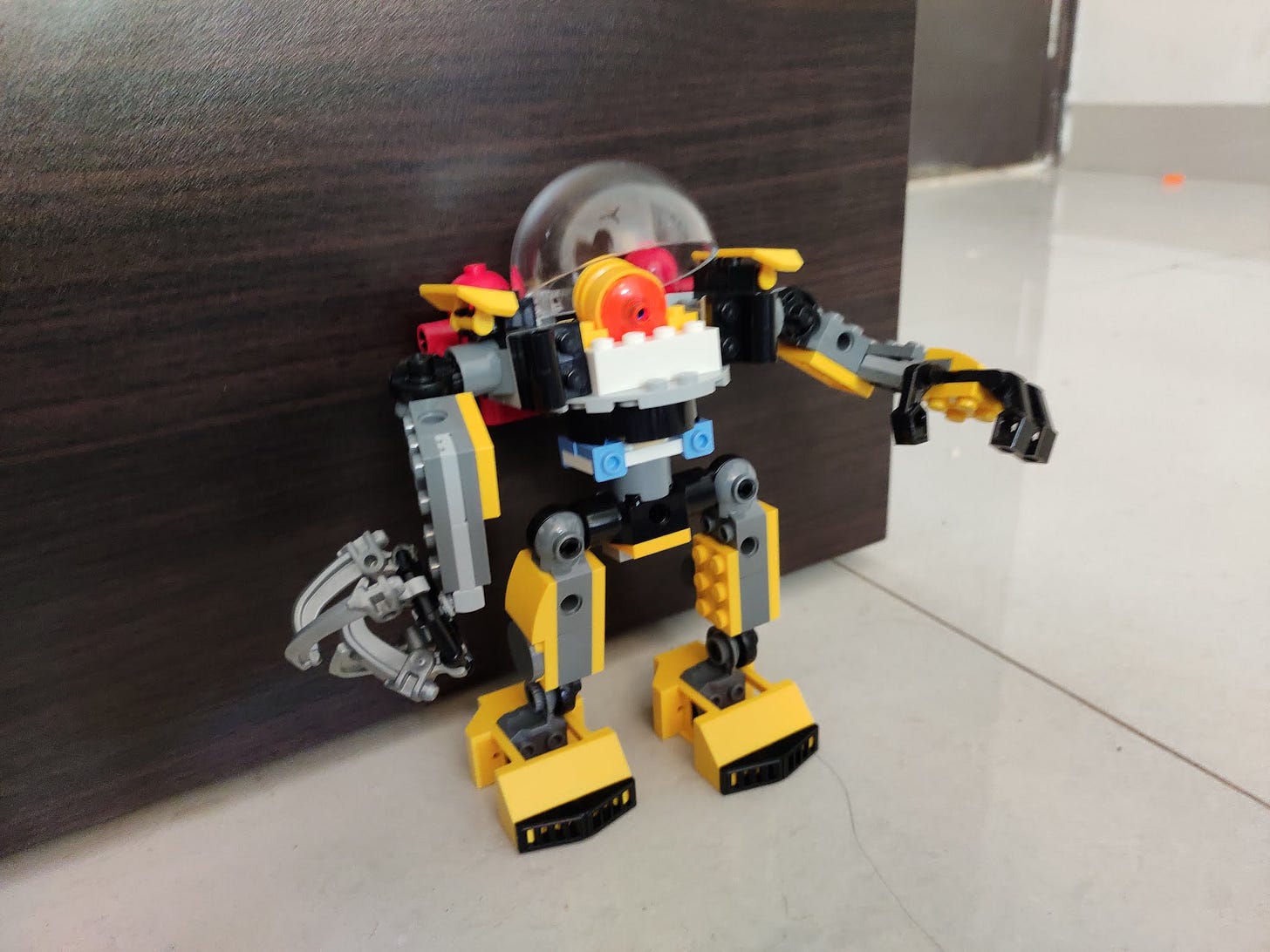
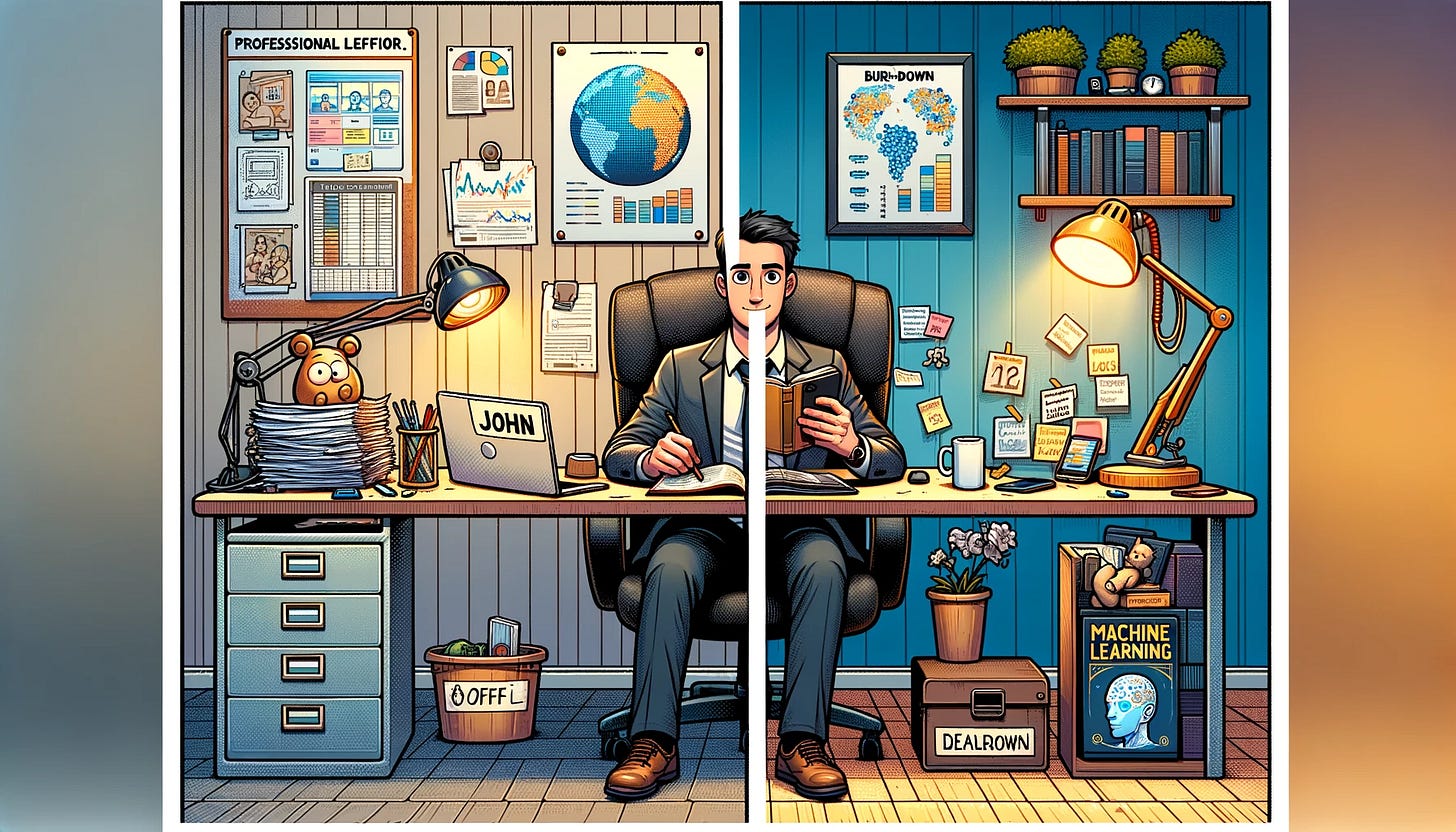
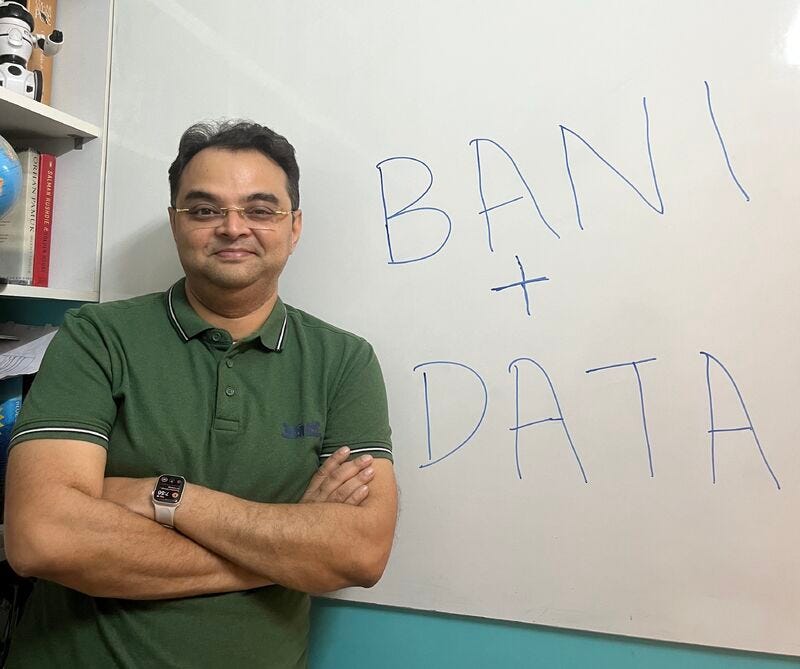



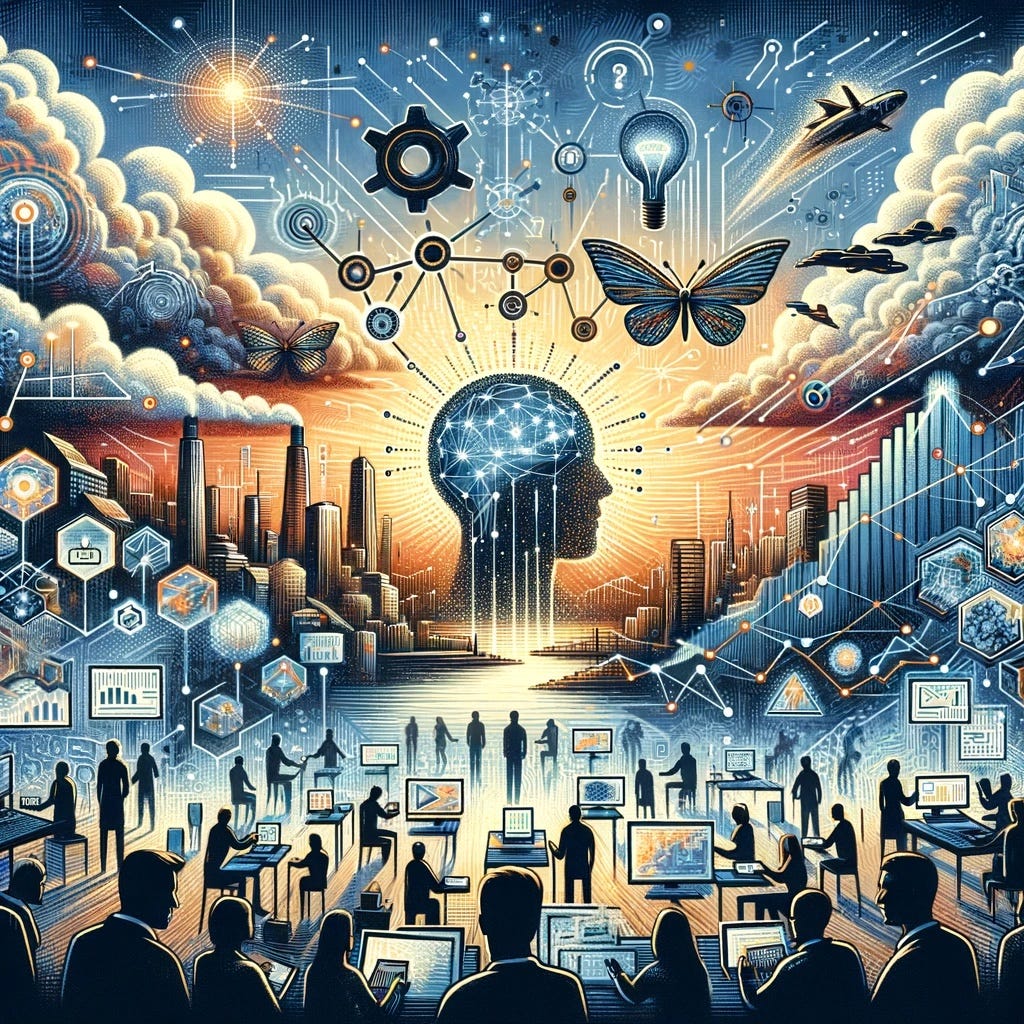
What a beautiful writeup brother. I am feeling the same stagnation which you have described above, with my own career path right now. Will try to implement the findings mentioned by you.